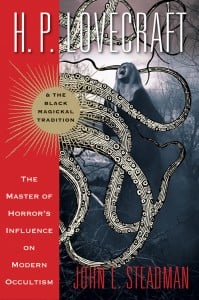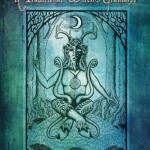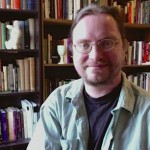 In conventional horror fiction, particularly horror fiction written in the 20’s and the 30’s, there is usually a clear line of demarcation between humans and monsters. Generally, the human is concerned with preserving culture, civilization, etc., while the monster invariably is focused on destruction, specifically, the destruction of individual humans, at least in the short term, but also, by implication the destruction of human culture and civilization in general. Additionally, in horror fiction, it is usually easy to tell which character or characters are “human” and which are “monsters”; the humans always look more or less like you or me, while the monsters, even those which are humanoid in appearance, usually differ significantly in terms of physical appearance, at times very obviously, but occasionally, in more subtle ways.
In conventional horror fiction, particularly horror fiction written in the 20’s and the 30’s, there is usually a clear line of demarcation between humans and monsters. Generally, the human is concerned with preserving culture, civilization, etc., while the monster invariably is focused on destruction, specifically, the destruction of individual humans, at least in the short term, but also, by implication the destruction of human culture and civilization in general. Additionally, in horror fiction, it is usually easy to tell which character or characters are “human” and which are “monsters”; the humans always look more or less like you or me, while the monsters, even those which are humanoid in appearance, usually differ significantly in terms of physical appearance, at times very obviously, but occasionally, in more subtle ways.
One interesting feature in the horror fiction of H. P. Lovecraft (which is decidedly not conventional horror fiction) is that it is sometimes difficult to tell the difference between humans and monsters, and the line between the two is often blurred. A perfect example of this is shown in Lovecraft’s magnum opus, The Shadow Out of Time (1935). The novel describes a racially and ethnically different culture, a different species, in fact, from humankind, which he refers to as the “Great Race.”
The Great Race lives in the late Paleozoic age on earth well before the advent of mankind. They are an alien culture and about as different from humans in terms of appearance as could be imagined. They resemble enormous, iridescent cones, about ten feet high and ten feet wide at the base, their apexes projecting cylindrical members, some of them terminating with claws or nippers, others consisting of globes with great, dark eyes. The bases of these entities, furthermore, are fringed with a rubbery gray substance, which allows them to move via a series of contractions and expansions.
In terms of their appearance, the Great Race could be interpreted as being monsters, since they differ so radically from the humanoid. And yet, in terms of their overall intelligence, government and technology, the Great Race is far superior to mankind. They communicate with each other telepathically; they live in great cities with buildings a thousand feet tall and they travel in nuclear-powered vehicles.
Their political and economic systems are socialist, with economic resources being allocated rationally to each citizen. Their government consists of a small board of citizens who are elected regularly by the votes of all citizens who are able to pass certain educational and psychological tests. Industry in the cities is highly mechanized and demands little time commitment from citizens and the resulting leisure time is devoted to intellectual, aesthetic and artistic expression. The technology level of this race, of course, is necessarily very high, which is a necessity for basic survival, given the fact that there are constant geological upheavals and changes in the climate and the earth itself that demand constant attention.

Most exchanges take place over the course of five years or so, and during this period, the intrepid Great Race voyager will then study the life of the new society in which it finds itself, exploring the history, sociology and mythology of the culture. In the meantime, the displaced host, after acclimating himself or herself to their situation, is invited to write a history of his or hers own time for the Great Race’s archives; the host also, if cooperative, is allowed to make excursions outside the cities, consult the Great Races extensive libraries and converse freely with all member of the Great Race and, in fact, with other hosts from different worlds and times.
Lovecraft’s Great Race, thus, satisfies one of the basic criteria for being human, as outlined above, since they guard and protect human culture. But what is most remarkable about this story is that Lovecraft goes on to argue that the members of the Great Race are, in fact, fully human, in spite of their monstrous appearance. In commenting on a similar race in another story, Lovecraft makes the following rather startling statement:
“After all… they were the men of another age and another order of being….Scientists to the last-what had they done that we would not have done in their place? God, what intelligence and persistence! What a facing of the incredible, just as those carven kinsmen and forbears had faced things only a little less incredible! Radiates, vegetables, monstrosities, star-spawn-whatever they had been, they were men!”
I am claiming that Lovecraft’s comment here is startling and remarkable because he is deliberately (and rightly, in my opinion), equating these obviously alien beings and their obviously alien culture with human beings and human cultures. As such, he has very subtly broadened the definition of what it is to be human, and clearly, Lovecraft is telling us that the definition of human being should not be dependent on superficial considerations such as appearance, or different behaviors, or different lifestyles and cultural idiosyncrasies. It should be dependent, rather, on higher issues and the highest activity that any human can engage in, according to Lovecraft, is to protect and nurture culture and civilization.
_______
About our guest: John L. Steadman is a scholar of H. P. Lovecraft and western occultism and has been a magickal practioner for more than thirty years. He is currently a college English professor at Olivet College in Michigan. His latest book, H. P. Lovecraft and the Black Magickal Tradition The Master of Horror’s Influence on Modern Occultism was released in September of 2015.
Photo of John Steadman by Ligeia Leigh Steadman

















